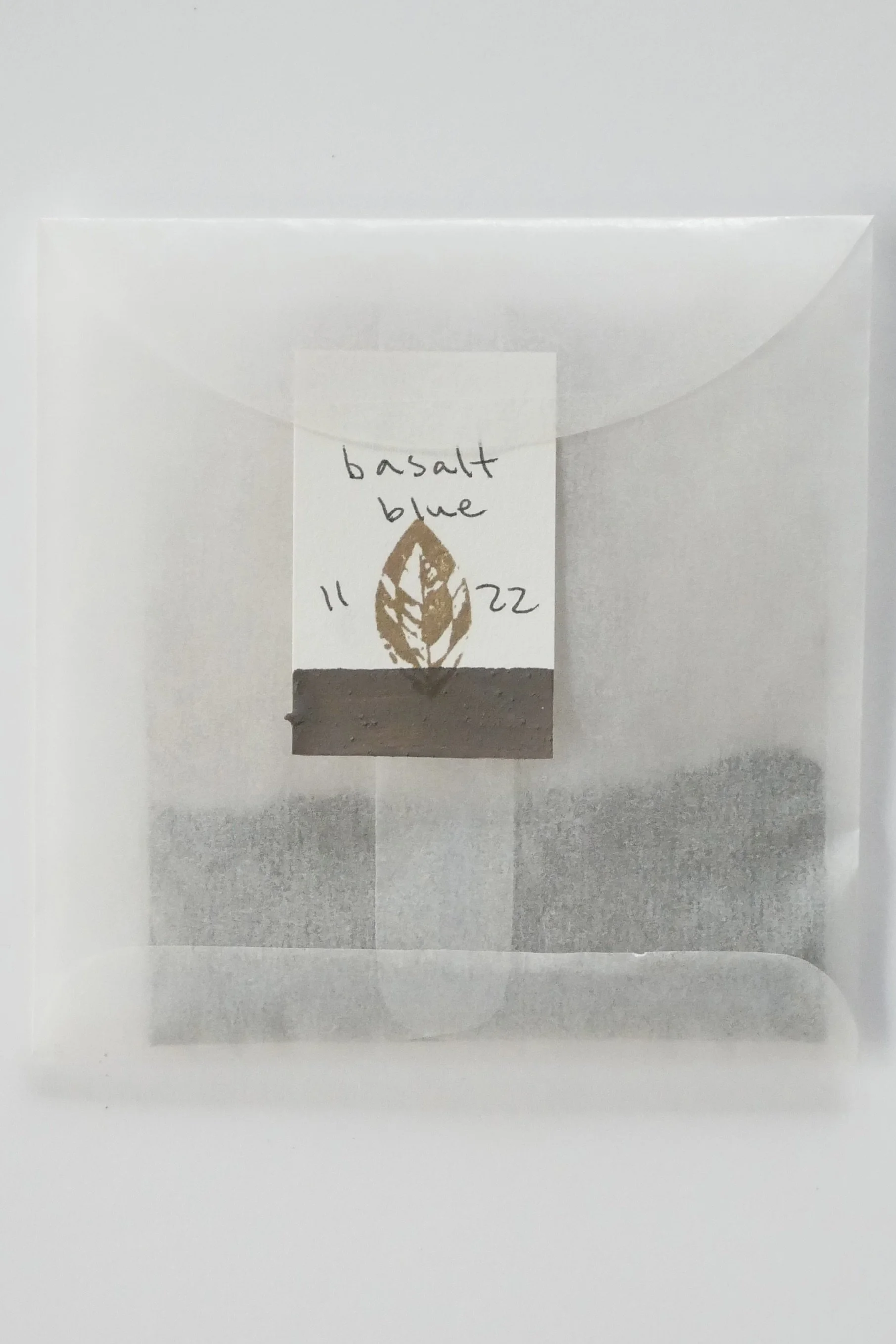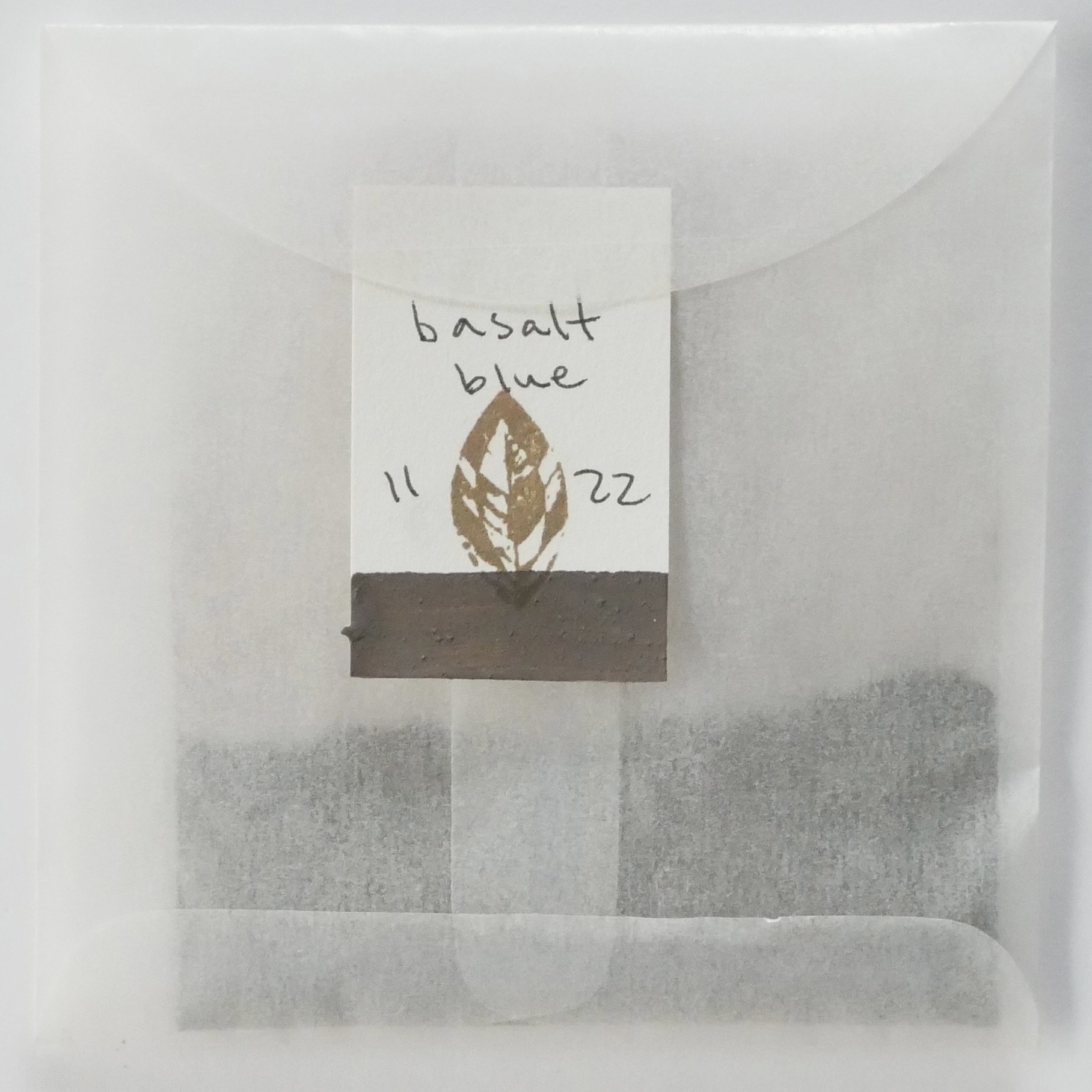basalt blue : november ’22
Basalt Blue, a blue-grey pigment, was gathered from a volcanic igneous rock formation that formed in the older part of the Western Cascades from volcanic eruptions 17 to 35 million years ago along the North American subduction zone. Basalt makes up 90% of the volcanic rocks on earth. It was gathered from an abandoned gravel quarry used to make the forest service road leading to the popular hiking destination Mount June. Basalt blue is a chameleon of sorts: when placed next to greens or blues, it looks grey, but when contrasted with warm hues like red or yellow ochre, its deep, luminous blue is revealed.
Editor’s Note: Hosanna put many hours into the processing of this pigment, grinding it to a fine dust in her mortar and pestle, levigating it (using water to separate out the finest particles), drying it, and then re-grinding it again to break up the dried cakes. The result is a color-rich, smooth & creamy pigment.
contributor: Hosanna White
Hosanna is a pigment forager, potter, and earth artist of European-American descent living on Kalapuya land in the foothills of the Cascades in Western Oregon. She is dedicated to slow crafts that teach patience, cultivate gratitude, and help her shed expectations of consumption and convenience culture. Her creative passions include painting, acorn foods, earthenware pottery, land tending, and community organizing. See her work on Instagram, here.
Photo from Hosanna’s Instagram.
From the Long Tom Watershed Council website.
22% donation recipient : Long Tom Watershed Council
For 25 years the Long Tom Watershed Council has worked on behalf of its community to build a culture of neighbors helping neighbors to do the right thing for land & water in the home we share. From the Coast Range to the Willamette River and everything in between, this community expresses its values for clean water and healthy habitats through the council’s work – watershed wide. Hosanna is directing this donation specifically to the Long Tom Watershed Council’s Traditional Ecological Inquiry Program, which brings Native youth together with elders and traditional knowledge-keepers in the Southern Willamette Valley to practice their food ways, material culture, language and land tending projects throughout the year. www.longtom.org/community/teip




